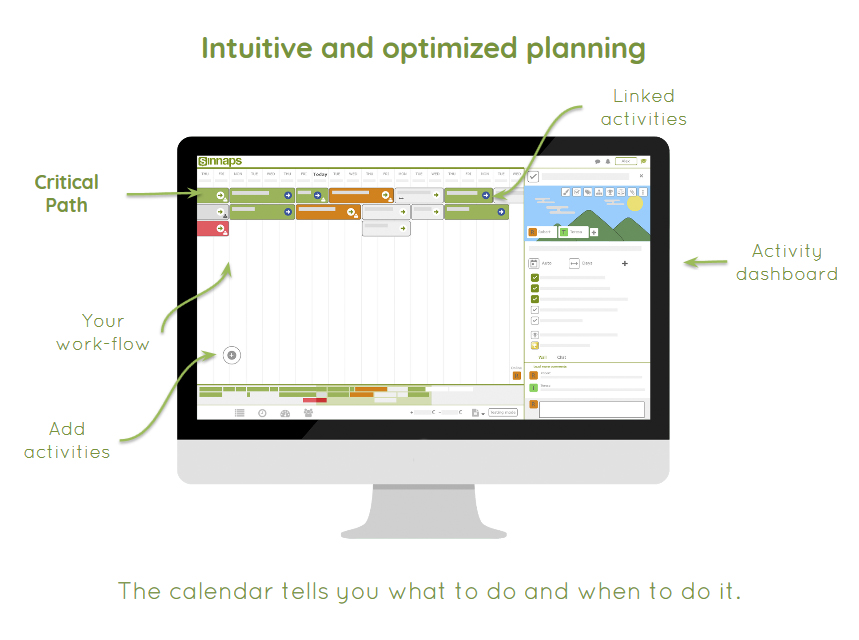Lean Six Sigma is essentially a methodology that is based on team effort to collaboration in order to improve performance and to systematically remove waste. Waste such as defects, overproduction, waiting, non-utilise talent, transportation, inventory, motion and extra processing our worked to be removed. The lean Six Sigma methodology dates back to 1986 when it was developed to compete with the Kaizen Japanese business model. It was about competing with Japanese products that were of a higher quality. The lean thinking Womack wrote a book in 1996 about banishing waste and creating wealth in corporations.
The Six Sigma methodology is a synergy between the concept of lean and Six Sigma. Lean is all about focusing on the elimination of waste and Six Sigma is centred on improving the quality of the process outputs by the removal of the waste. Lean helps to achieve a continual and one piece flow by improving the links between process steps and Six Sigma helps to tighten those links. Overall, it is a very effective methodology for organisation in general and when managing projects.
Índice
Value Stream Mapping
No matter what industry you are in, Value stream mapping is extremely useful. Essentially, it is a flowchart mapped out to illustrate, analyse and to improve the processes of delivering a product or service or project management goal. It helps you to review your process flow.
The most important part of reviewing your process flow is pinpointing any defects so that you can eliminate waste and to reach your goals more efficiently and effectively, which a lean value stream helps you to do. Everything the pictures on the flowchart will show if it is adding value or not so that you can eliminate the items that are not adding value.
In project management especially, when working on a project for a client it is important to take into consideration their acquirements and that they want added value and the project completed in the most efficient way possible. Why drawing out a value stream map you can analyse what you are doing now and work on what you will do better in the future with a lean value stream.
Six Sigma Belts
The same way that in the team there are various team members with different roles and a project leader, Six Sigma professionals exist at different levels. Depending on the level and the belt acquired at that level the role will be different. When managing projects there are generally five belts:
- Lean Six Sigma Black Belt: The lean Six Sigma black belt is best at problem-solving projects. They are involved in the training and coaching of project teams and lead black belt lean projects.
- Six Sigma Green Belt: Mostly involved with data collection and analysis for Black Belt projects. Also leads Green Belt projects.
- Master Black Belt: The Six Sigma master black belt trains and coaches Black Belts and Green Belts. Involved in developing key metrics and the strategic direction for the organisation. Acts as an organisation’s internal consultant.
- Six Sigma Yellow Belt Certification: A Six Sigma yellow belt certification is given to team members that understand the concepts and participate as project team members. They review process improvements that support the project.
- Six Sigma White Belt: A Six Sigma white belt can work on local problem-solving teams that support overall projects. Understands basic Six Sigma concepts from an awareness perspective and for this reason, may not be part of a Six Sigma project team.
Apart from the various roles that the lean Six Sigma belts play in managing projects, project also need organisational support which is given by Six Sigma professionals known as a Six Sigma champion or Six Sigma executives.
The Six Sigma Green Belt
A Six Sigma green belt is a very valued employee that is part of an organisation and has been trained in the Six Sigma improvement methodology. They are responsible for leading process improvement teams. Most of the time spent on careful decision-making and strategy building elements of the Six Sigma project planning process. Green belts have a deep understanding of the overall process and concepts. They make sure to deliver feedback and drive performance goals. The following are examples of their main responsibilities:
- Lead improvement teams.
- Operate under the supervision of a Six Sigma Black Belt.
- Analysis and problem-solving.
- Six Sigma project participation rather than direct leadership.
- Coordination with the project data collection process team and validation of the measurement system.
- Projects within green belt’s own functional area.
- Team facilitation skills improvement.
- Development of a Project charter
- Development of SIPOC (Supplier, Input, Process and Output) Diagram for the project.
Lean Startup Methodology: How Does It Work?
Lean Six Sigma Green Belt Work Experience
Six Sigma Green Belts are employees who spend some time on project process improvement teams. They are tasked with analysing and solving quality problems. In order to be qualified as a Six Sigma green belt, you must receive appropriate training and certification.
Apart from that, relevant work experience is required. The Six Sigma Green Belt certification requires three years of work experience in one or more areas of the Six Sigma Green Belt Body of Knowledge.
Any candidate wishing to be certified needs to have worked in a full-time, paid role while also taking a Lean Six Sigma online course or college course. This is so that they are familiar with a work and project setting and they can apply their learning to realistic work scenarios and situations. This means that any paid internship, co-op or any other work is not considered as relevant for a green belt certification.
HOW TO GO FROM IDEAL TO REALISTIC PLANNING
Lesson 3 – Free online Project Management course
Toyota Production System
The Toyota production system is based heavily on the Lean Six Sigma program. The following are some examples of the Toyota Six Sigma strategies:
- Decreased setup times: Toyota manged to cut setup times from months to hours and even minutes by handling their procedures, using carts and training employees to do their own setups. This is because the old setup procedures were wasteful and did not add value to the company’s processes.
- Minimum Production: Toyota’s method of minimum production allows them to manufacture various things is smaller quantities, helping to avoid the large setup costs of manufacturing everything in bulk batches.
- Workers Empowerment and Involvement: Toyota placed a strong emphasis on teamwork so that the teams formed would have their own support structure and be given specialised tasks to perform. This highly increased motivation and made work more efficient.
- Dealers Participation: Toyota treats its dealers as company partner moving towards a lean supply chain. The dealers are also made familiar with ways to decrease setup times, defects, inventories and machine breakdowns and are encouraged to take responsibility for their outcomes.
GET STARTED NOW
Agile best practices project management concern detailed and effective planning, which Sinnaps, software project management, presents to users. Try it now 😉
Here at Sinnaps, we love hearing your opinion and helping you in any way we can. Be sure to give this article a like if you enjoyed it and feel free to leave a comment with any questions or opinions that you have! 😊




